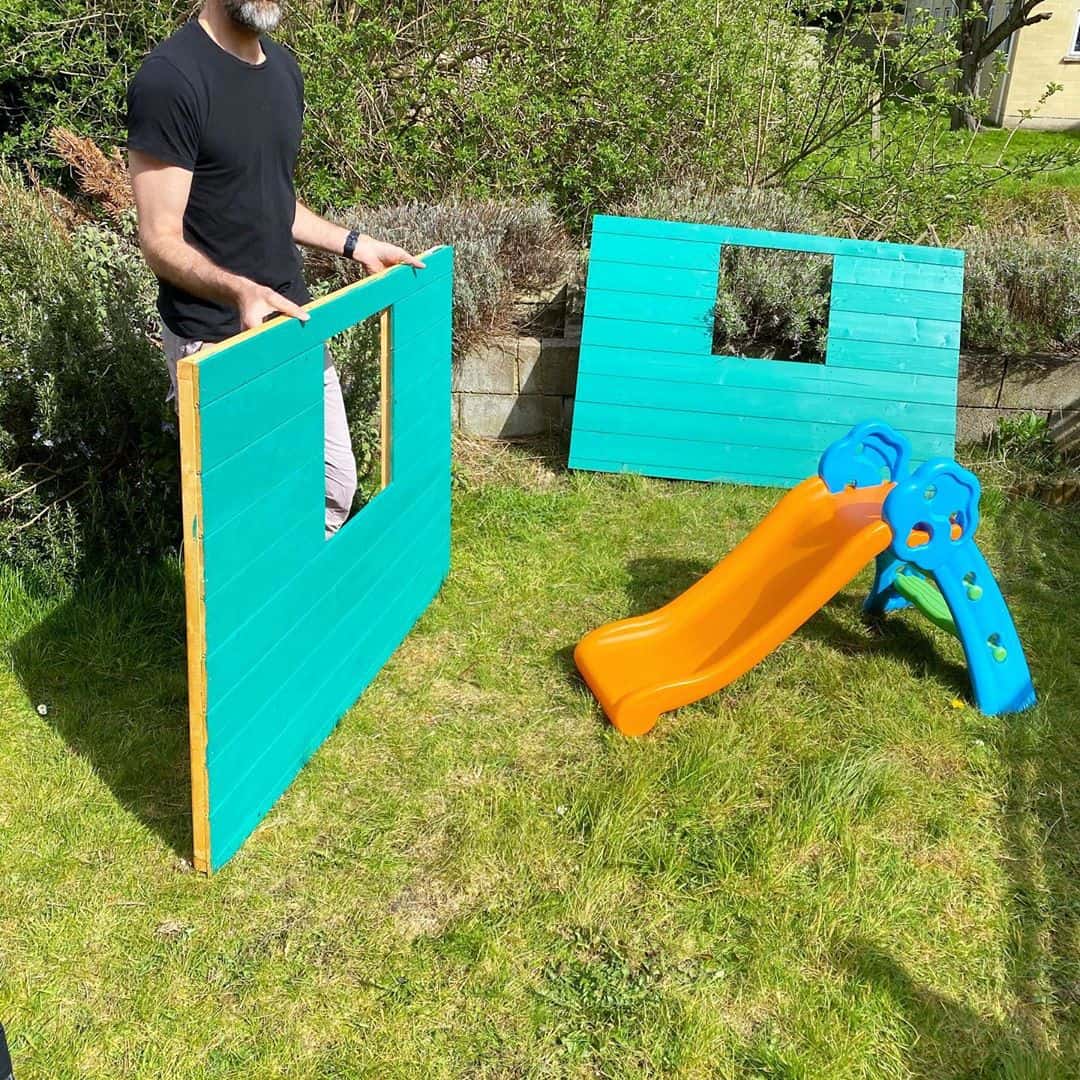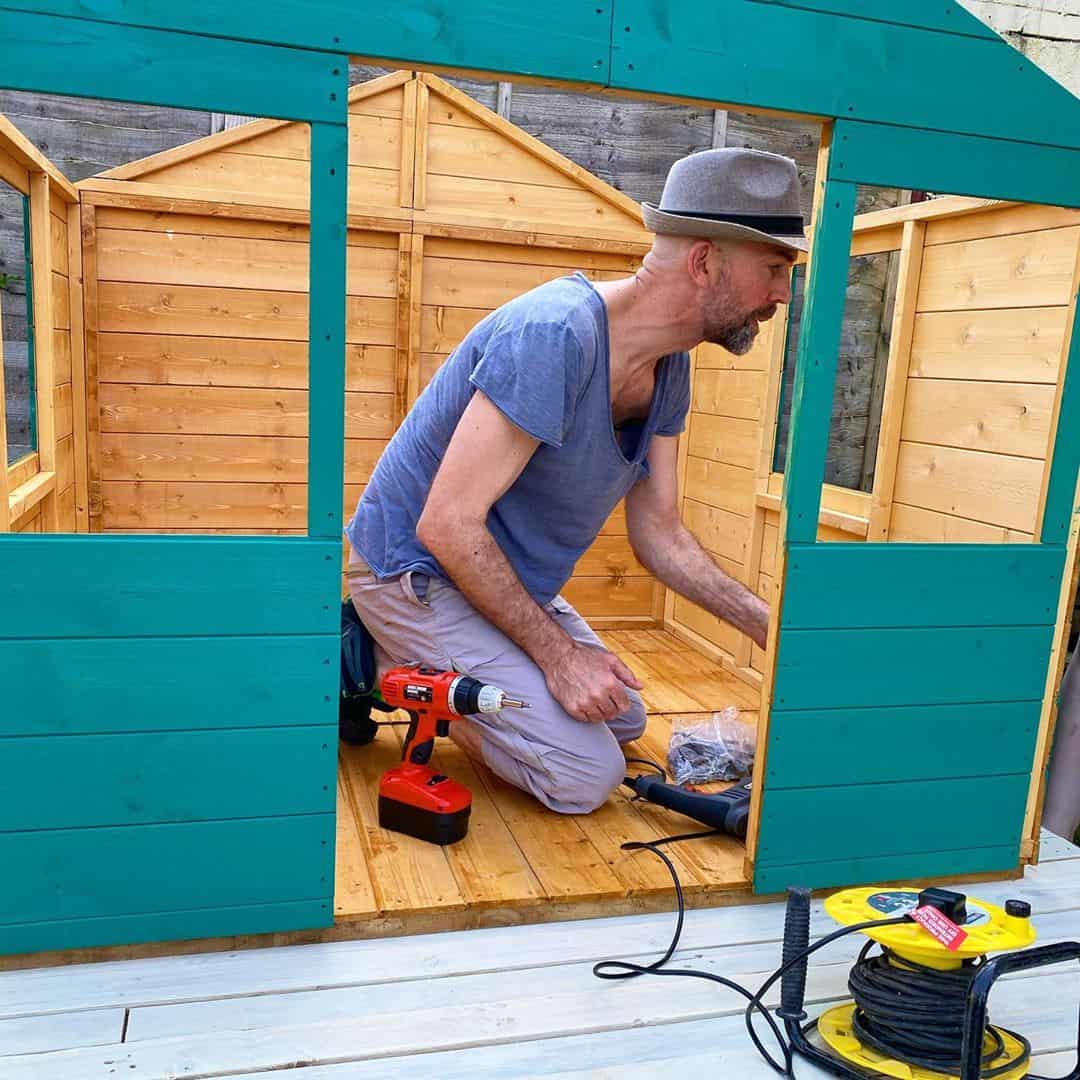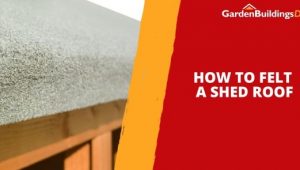Jump to:
Here at Garden Buildings Direct, we’re strong advocates for why children need to play outdoors. And an outdoor playhouse is one of the best resources that can encourage children to play in the garden.
But we’re also realistic that there are only so many fun activities you can come up with before you need a helping hand. And a kids’ playhouse can be that ace up your sleeve. Playhouses can give your children a place to let their imaginations run wild and form lifelong happy memories.
So if you’re looking to get your toddler outdoor toys, then why not consider picking up a playhouse?
In this guide, we’ll cover everything from types of playhouses to building a base for one. We’ll even go over decorating and maintaining it.
Check it out.
Choosing a Child’s Playhouse for Sale
If you want some expert advice on choosing a playhouse, remember:
- How do your kids play? And what are their interests – this might influence your decision
- Playhouses come as single and two-storey or tower structures
- Wooden playhouses are more durable and long-lasting than plastic ones, but they require more maintenance
- Playhouses can help with children’s development
- Wooden playhouses can be re-painted and customised to grow with your children
- Weigh up your available space and budget before buying a playhouse
- A wooden playhouse from Garden Buildings Direct is high-quality and can be put together in a matter of hours
- You need to build a suitable elevated base for your playhouse
So bear those points in mind as we go through this guide. Let’s get started.
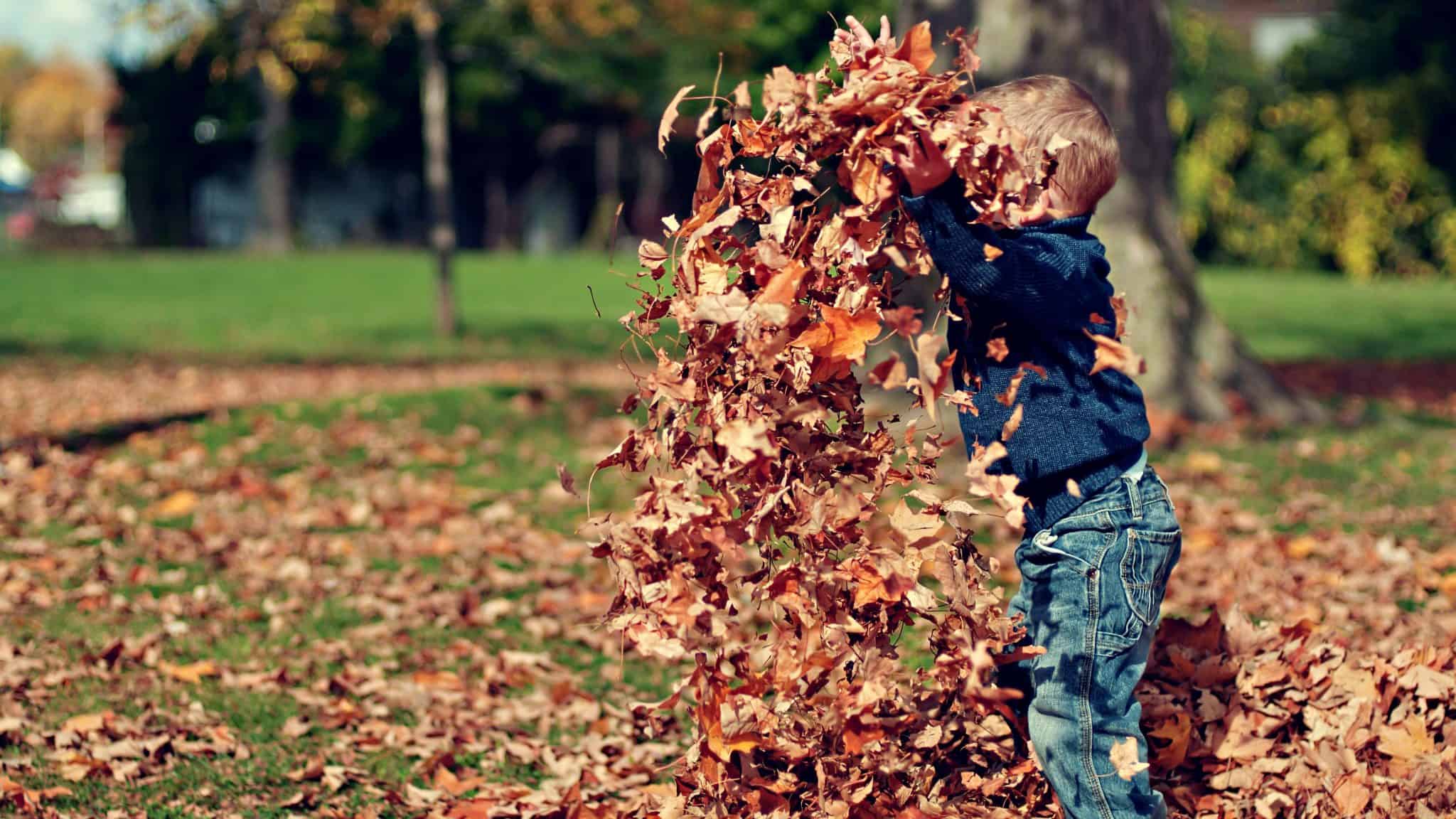
What are Playhouses?
A playhouse (or Wendy house) is a garden building, usually made of wood or plastic intended for children to play in. They can be single- or two-storeys and provide an insulated area for children’s development and imagination to run wild whilst being in a safe and weatherproof structure.
But a garden playhouse can be one of many different types.
Choosing Between Wooden and Plastic Playhouses
We focus exclusively on high-quality wooden playhouses because they’re more durable, long-lasting, and customisable than plastic alternatives.
But if you’re still unsure about the difference, we’ve put together a full breakdown comparing the two: Wooden vs Plastic Playhouses
Types of Playhouse
Single Storey Playhouse
If your children are smaller, you might think about getting a smaller playhouse. A classic one-storey playhouse works well in a smaller garden or courtyard. Plus, without stairs or ladders to worry about, they’re perfect for younger children and are very safe.
On the downside, children might outgrow them, therefore cutting down on their usage-life.
Best for: Small children, small gardens, and safety.
Two-storey playhouses
A two-storey playhouse is one that’s split across two floors. They usually feature an internal bunk on the second storey reached by a ladder. With some options, you can get a two-storey playhouse without a bunk. This can then accommodate older and taller children.
Like single-storey playhouses, they may either come with an apex or reverse apex roof and Georgian-style or shuttered windows. Windows on both levels mean that your children can get more sunlight and vitamin D and play throughout the day.
Top picks:
BillyOh Gingerbread Max: Shuttered windows, apex roof, and charming details.
BillyOh Peardrop Extra: A more spacious two-floor option with covered veranda and flower boxes.
Best for: Larger or more adventurous children.
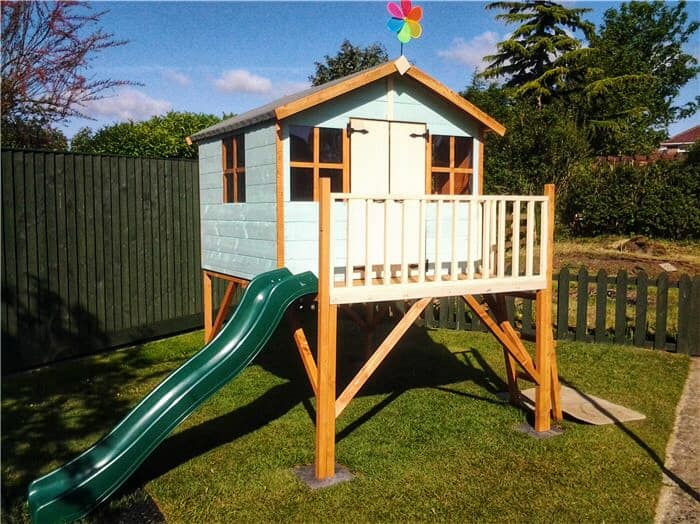
Tower playhouses
A tower playhouse is elevated off the ground on stilts. Children access the playhouse via an external ladder onto a small balcony to enjoy a great view from up top.
Tower playhouses are very popular as they also provide space underneath. You can use this for toy storage, as a shaded play area, or even as a garage! Tower playhouses are excellent choices for growing and more adventurous children.
You can find versions of this style as tower playhouses with a slide or even swing sets. (Plus, it can give kids a place to play that parents can’t easily access!)
Top picks:
BillyOh Lollipop Max Tower: Raised design with balcony and slide – ideal for energetic play.
- BillyOh Lollipop Junior Tower: A great mid-size option for kids who love climbing.
Best for: Growing, adventurous, and active children.
See what customers had to say. Check out our BillyOh Tower Playhouse reviews.
We’re almost finished with playhouse types – we promise! Then we can get on to how to pick, position, and build one.
But we’d also like to give some:
Special mentions
There are a couple of other wooden playhouse contenders you should consider.
Wendy houses
The world was first introduced to Wendy houses after J.M. Barrie’s Peter Pan. And since then, our little ones haven’t looked back. Really, it’s just another name for a small playhouse. The classic look is usually that of an apex-roof single-storey playhouse, though.
You might also find a Wendy house with a platform and picket fence to extend the play area, as well as a gate.
Best for: A timeless look as well as indoor and outdoor play.
See what our customer had to say. Check out our BillyOh Wendy House reviews.
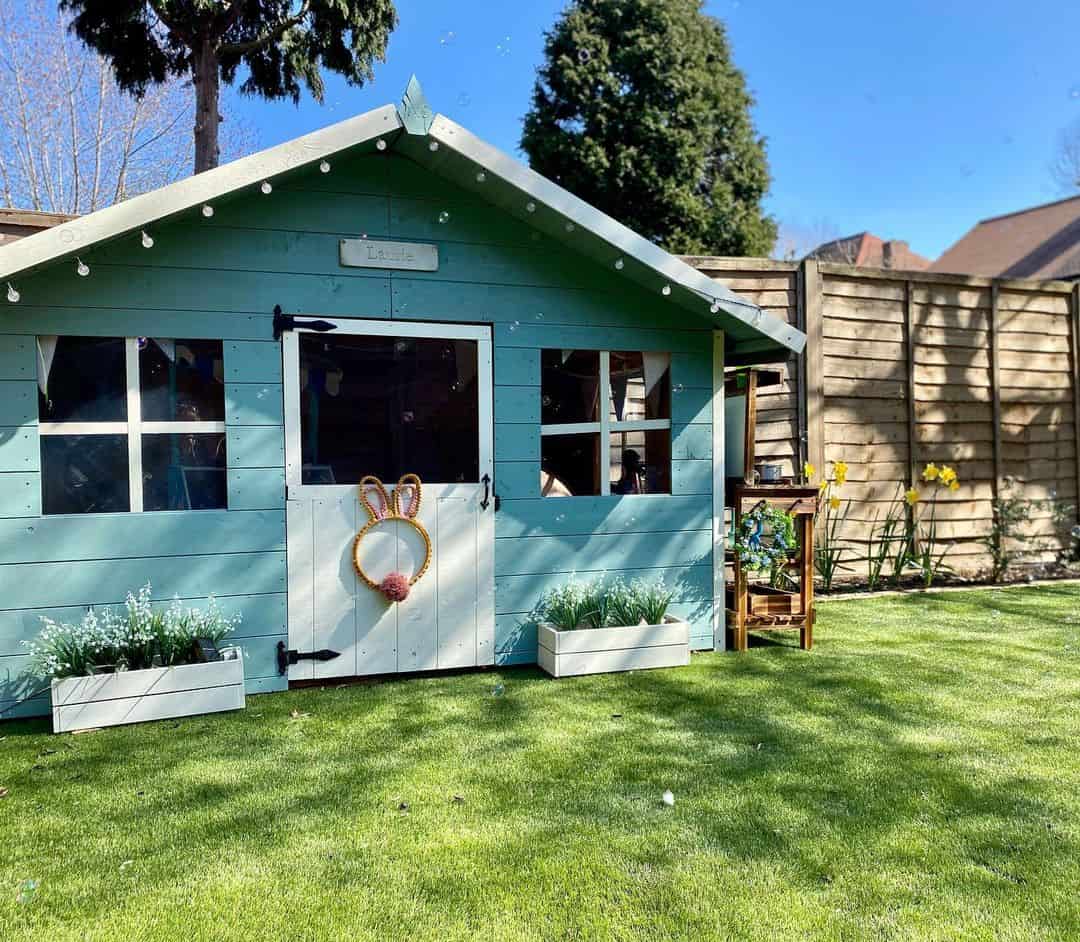
Cottage playhouses and cubby playhouses
Again, just more names for Wendy house or playhouse. Featuring a traditional design that often includes barn doors, flower boxes, picket fences and traditional crossed windows. Can be either one storey or two stories.
Top Picks:
BillyOh Gingerbread Junior: With charming details like flower boxes and shuttered windows.
BillyOh Bunny Max: A great balance of simplicity, price, and traditional design.
Best for: Kids with green thumbs.
See what our customers had to say. Check out our BillyOh Gingerbread Junior Stories.
And last but not least there are even options for:
- Teepee playhouses
- Growing your own playhouse
- Or even to convert an existing shed into a playhouse
Now that you know what the options are let’s have a look at the why before we get to the how.
Why Buy a Playhouse?
This might be your first time asking us this question. If it’s not, you’d know that we’re big proponents of the importance of playhouses for kids.
But it’s not just our opinion; playhouses can:
- Be used year-round; rain or shine
- Be a dedicated space for play
- Help children feel responsible for their own space, encouraging autonomy
- Have knock-on health benefits by getting kids out in the fresh air and sunshine
- Reduce time spent on screens
- Incorporate projects such as growing in planters
So the benefits of a playhouse are two-fold. Not only is a garden playhouse simply a great place to have fun, but it can also help with things like socialising and reasoning through imaginative play.
And if you’re still stuck for ideas.
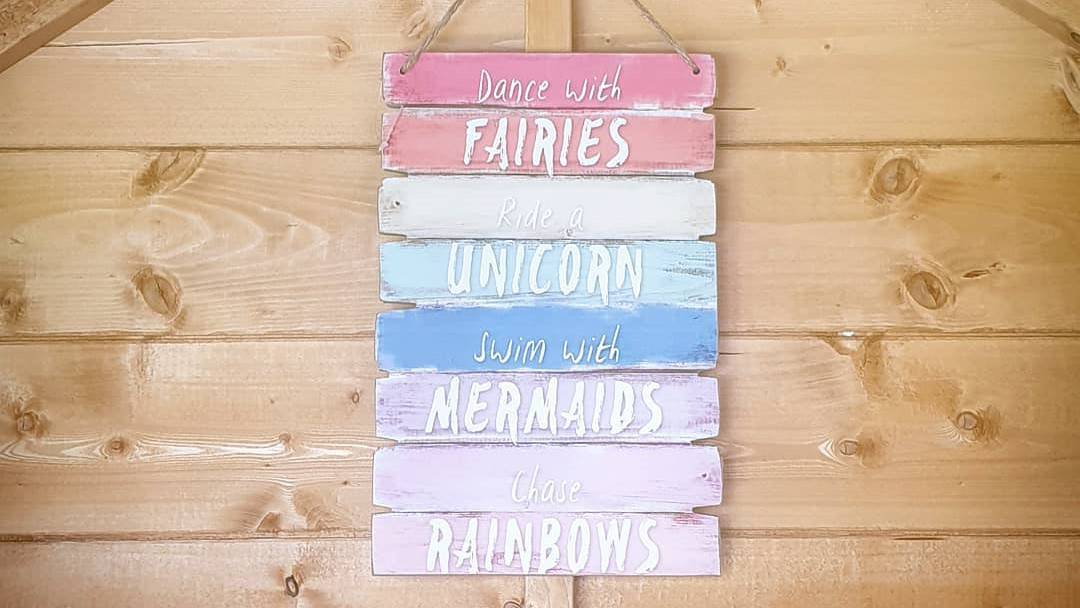
How can playhouses be used?
Whether you go for a tower, a cottage-style Wendy house or a two-storey hideaway, there are countless ways to personalise your playhouse.
Some families turn theirs into a space station, superhero HQ, or an enchanting fairytale cottage.
Want ideas? Check out our playhouse decor ideas for inspiration on themes, storage hacks, and seasonal styling.
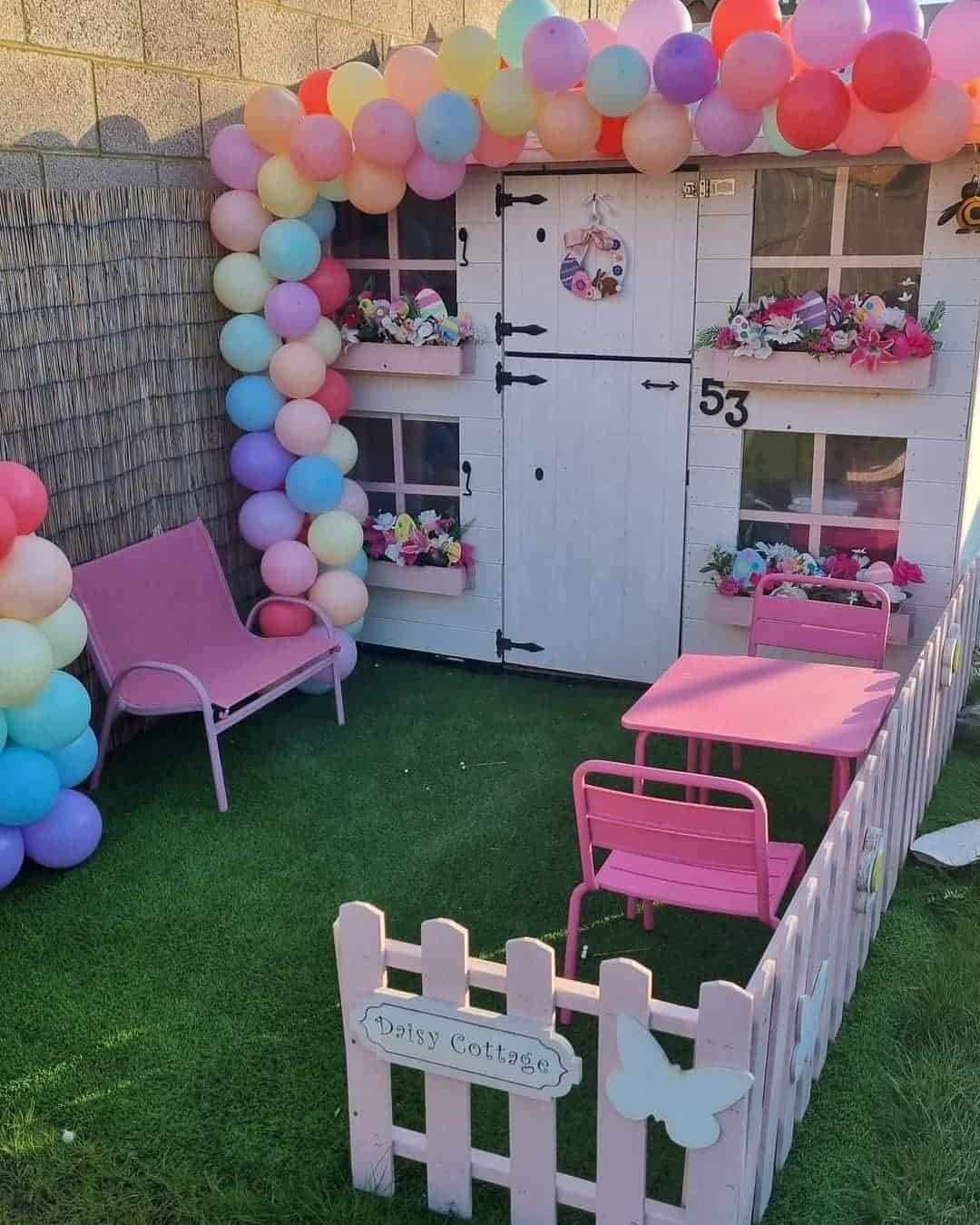
Choosing a Playhouse (Checklist)
No matter whether you’ve already settled on one-storey or two, there are things you’ll need to consider.
When choosing a playhouse, think about:
- Size and height – How big are your children (and how big will they get?)
- Usage – How often do you plan to use your playhouse and for how long do you want to keep it?
- Safety – We’ll go into this in more detail but make sure your playhouse is EN71-certified
- Roof type – Usually apex or reverse apex for increased headspace
- Design features – Are you particularly sold on the idea of a picket fence or barn doors?
- Extras – Would your kids benefit from a slide or a ladder?
- Available space – In your garden or courtyard
- Planning permission – We’ll go into this in more detail in a moment
1. Size and height
You’ll need to consider not only the size and height of your children but of the playhouse. If you’re looking for something they can grow into then a two-storey playhouse or one with an apex roof might be the best option.
Not sure what size suits your child’s age and height? Read our guide to playhouse sizes to compare internal heights, door sizes, and more.
A taller playhouse also potentially allows more room for adding things like overhead storage shelves. Try to weigh up your budget and the other factors on this list and go for the largest playhouse you can reasonably afford.
2. Usage
For what and how much you intend to use the playhouse should factor into your decision. For example, if you want something cheap and cheerful, a plastic playhouse might do the trick.
But if you’re children are the type who can play out in the garden for hours on end, you want to make sure they’ve got a playhouse that’s durable. Think as well about how weather-resistant your playhouse is likely to be.
For example, wooden playhouses can be retreated to protect them against the elements. Whereas plastic playhouses don’t have components that can rot.
3. Safety
With usage also comes the question of safety. If you’re worried about very small children falling, then perhaps don’t choose a tower playhouse.
Although, even tower playhouses will come with things like anti-slip ladders.
For any kid’s playhouse, ensure that they meet all the Garden Buildings Direct standards of:
- EN71-certified
- Glazed windows made from shatterproof styrene
- Safety hinges on doors
- 12mm gaps around doors for little fingers
- Non-slip ladders
- Certified for ages 36 months+
- Smoothed and planed timber
On top of these safety features, you might also ensure that there’s an adult on hand to supervise playhouse use. Or, at least make sure your garden playhouse is visible from the main house.
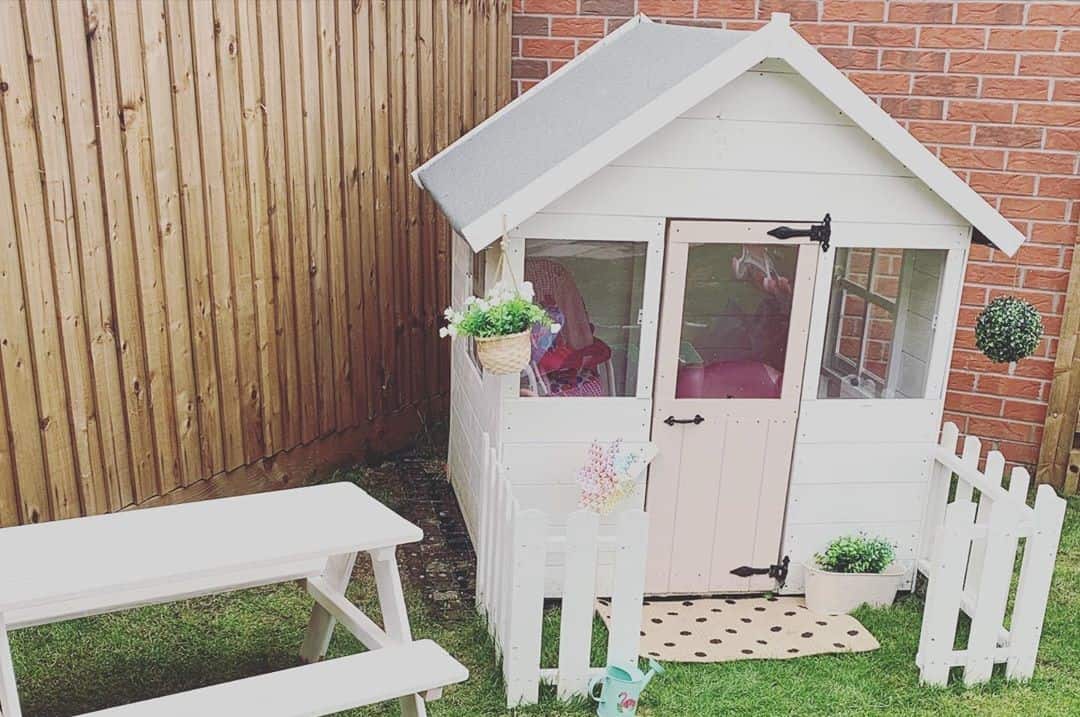
4. Roof type
Your playhouse’s roof type will factor into the question of size and aesthetics. The main options on offer include:
- Pent roof – Where the roof is one single plane that slopes to the back of the shed to maximise runoff
- Apex roof – Roof is made of two slopes that meet at the highest point in the middle. Slopes fall to either side of the playhouse face
- Reverse apex – Similar to an apex roof, but slopes fall towards the front and back of the shed
- Dutch barn – Made of four sloping panels that create a smoother apex-style roof
Consider which roof is going to give you maximum headspace for growing children.
5. Design features
As well as the main style of playhouse that you choose (e.g. tower, Wendy house, two-storey etc.), what design features excite you and your kids?
Do you want traditional-looking Georgian or crossed windows? This may well play into the theme of your playhouse that we discussed earlier. If you want to make a classic fairytale cabin, then a quaint playhouse with a picket fence might be the best choice.
6. Extras
Once you’ve settled on the general style of the playhouse you’d like, think about extras. If your children are particularly boisterous, then the addition of slides, swings, and ladders might be in order.
7. Where to put a playhouse?
We’ll break this last point down into two sets of practical considerations.
Available space
When picking a playhouse (or any garden building), you need to be realistic. Sure, you might want a luxury two-storey log cabin playhouse, but think about:
- Safety – Is your proposed playhouse site near to any dangers like nettles or a ditch?
- Level ground – Building a suitable base for a wooden playhouse can extend its life. But it’ll require level ground
- Surrounding space – Is there enough room to access all around the playhouse?
- Drainage – Make sure to build where there is sufficient drainage. Avoid marshy ground or building at the bottom of a slope
- Trees – Will trees block sunlight and put your children off playing in summer? Do trees pose a danger with falling fruit or branches?
- Supervision and visibility – Is your playhouse in the line of sight of the house? Can you get to it easily and quickly if need be?
Top Tip: Find a spot in your garden with space to create a level base. Leave room around your playhouse to access it for maintenance. (Or to allow children to run around it!).
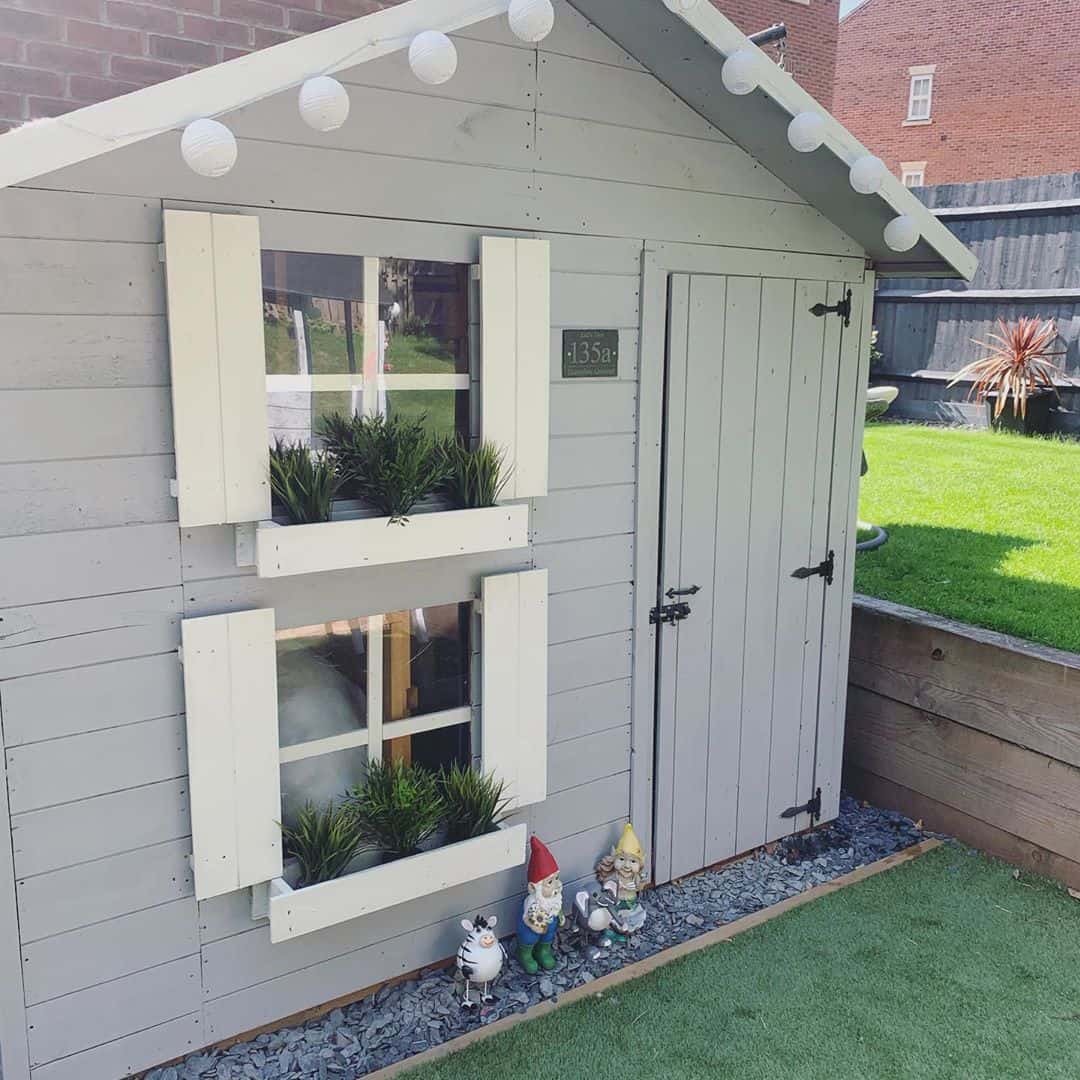
8. Planning permission for a playhouse
The second part of this point is – do I need planning permission for a playhouse?
Simply, the answer is no (or probably not). It’s very unlikely that you’ll need permission for a playhouse as it should be included under ‘permitted development’. But this may vary depending on where you live and whether you have a veranda or a garden.
As long as your proposed playhouse also doesn’t exceed 50% of your garden space, you shouldn’t need planning permission. However, it’s still always a good idea to check with your local council. You could also check with your neighbours as well, as a courtesy.
And finally, if you wanted to maximise usage in your child’s playhouse, you might consider installing utilities like electricity to your playhouse. If you intend to use it for year-round or even overnight use this can be a lot safer than simply trying to run an extension cord to it.
You might even provide a spot to charge their iPad if they’ve been good!
So now that you’ve seen all your options for playhouses and settled on the material and style that suits you, you might be thinking about buying one.
And buying a playhouse from Garden Buildings Direct couldn’t be simpler. Just choose your style and customise it as you please. Once your playhouse is delivered in easy-to-assemble tongue and groove panels, simply follow the buildings instructions.
To give you an idea of what to expect, let’s have a look at:
Building a Playhouse
If you want to, you can check out the post we wrote about building your own playhouse. But for now, we’ll just assume you want to know how to assemble the playhouse that you’ve bought.
If you bought your playhouse from Garden Buildings Direct, then your assembly instructions will have come with your order confirmation.
To follow these you will need:
- Some good weather (a clear day)
- A friend to help out
- A couple of hours free time
- A rubber mallet or hammer
- Drill or screwdriver and screws
- Staley knife
- Step ladder
You’ll also want to make sure you have a suitable base for your children’s playhouse. Building straight on to the ground isn’t advised. This is because moisture from the earth can cause rising damp and rot to your playhouse floor.
Instead, check out our post on how to build a shed base. You can replicate this for your playhouse. Options include either building on a concrete slab or pavers, or laying down a timber sub-floor or gravel and plastic foundation base.
Make sure to build on as close to level ground as possible. Also, allow for adequate drainage and try to raise your playhouse off the ground.
Check that all your parts are there. Once you’ve done that, simply fit together the tongue and groove panels of your wooden playhouse, starting with the walls at the back. Between the two of you, you should be able to build your playhouse in a matter of hours easily.
To see how easy this process is, check out the video below:
Playhouse Maintenance
And once you’ve picked, bought, and assembled your playhouse you can start to get prepared for further down the line. Namely, treating and decorating it.
Treating and painting your wooden playhouse
Dip and pressure-treated timber will protect your playhouse against insects and rot. Otherwise, before assembly, you might want to treat your playhouse panels separately with a wood treatment with UV protection and a mould inhibitor.
This is because wood can either rot in damp and cold weather or dry out and crack in warm weather.
But essentially, sanding (where necessary), priming, and treating timber can help extend its life. Just remember to use a transparent sealer if you plan to paint over it. Use a coloured wood stain if you want a traditional, rustic look.
And always use EN71-certified or water-based paint if you’re painting your playhouse interior.
Playhouse will also typically have gaps where windows and doors are for safety precautions. We wouldn’t recommend it, but to make your playhouse more insulated and weather-proof, you might consider caulking around these gaps. That’s if you accept the associated responsibilities and trust your children!
A better way to achieve a similar goal might be to try adding a silicone sealant along the grooves of the roof. This way you will keep the safety measures intact.
Cleaning your playhouse
This might all seem like a lot, but further down the line you’ll also need to clean your playhouse.
For a plastic playhouse, this is fairly simple and is one of their biggest selling points. Simply wash the outside either with a hose, pressure washer, or just a soft bristle brush and some soapy water. The last method can be used on the interior as well.
Make sure to clean debris and bird droppings promptly as these can leech the colour from your plastic playhouse.
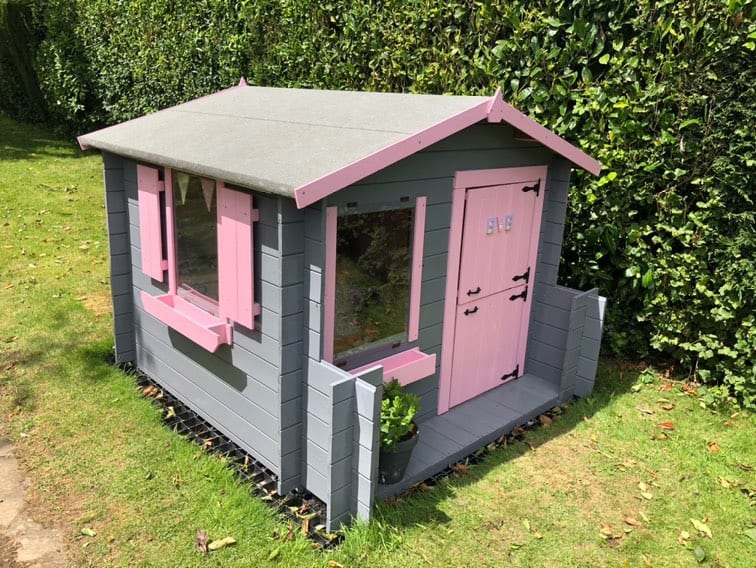
For wooden and plastic playhouses, sweep out the interiors to get rid of any leaves that might have blown in as well as dust and cobwebs. You could even check out some of our cleaning and maintenance tips.
We suggest a natural solution of either vinegar or bicarbonate of soda and water in a spray bottle for cleaning playhouse interiors. Make sure to aerate your playhouse sufficiently and keep kid’s out of it till it’s done. This is a lot safer and smarter than using chemical sprays where your children play.
And there you have. We’ve taken you from explaining what a playhouse is to looking into the future. We can just see it now, you and the whole family having a whale of a time in your brand new two-storey playhouse space station.
So, I guess it’s time to answer the big question:
Are Playhouses Worth It?
We’ve weighed in elsewhere on whether it’s worth building your own playhouse, but is it worth getting one at all?
Obviously, from us, the answer is a resounding yes – but why? Well, a playhouse – in general, or from Garden Buildings Direct can:
- Offer opportunities for year-round play
- Allow for play in good or bad weather
- Give you a high-standard garden building made from quality materials
- Be a purchase your can trust with precision fitting
- Be treated to last a long time
- Be customised to suit changing themes as your children grow
- Help your children develop
So just make sure to follow our guide to make the right choice for the style of playhouse that suits your budget and available space, among other things. Plan ahead with a kid’s wooden playhouse that kids can grow into, not out of. The rest is up to you!
And if you want, you can always check out how to prep your garden for a new outdoor building.
A quick comparison:
| Playhouse Type | Best For | Product Examples |
|---|---|---|
| Single-storey | Toddlers, safety, compact gardens | Bunny Max, Lollipop Junior |
| Two-storey | Older children, long-term value | Gingerbread Max, Peardrop Extra |
| Tower | Adventurous play, added features | Lollipop Max Tower, Bunny Max Tower |
| Cottage/Wendy Style | Traditional look, flexible themes | Gingerbread Junior, Bunny Max |
Playhouses For Sale
FAQs
How to make a playhouse myself?
Your Garden Buildings Direct playhouse requires a minimum of two people and some tools to help assemble it. Following the assembly instructions provided with your order, it should only take a matter of hours to build.
What size should a playhouse be?
You want to make sure to purchase a playhouse that your kids won’t quickly outgrow. If they’re taller, perhaps they need a two-storey playhouse. Make sure to try and maintain a scale that encourages them to use it without feeling overwhelmed.
A good way to do this is to mark out your proposed playhouse site before purchase with some strings lines. Adjust these until you find a size that your children are comfortable with.
Can you put a Wendy house on grass?
We’d advise against placing any garden building straight onto the ground as it can cause damp and uneven pressure on the structure. However, you can build a level gravel and plastic foundation onto grass or a timber sub-floor to elevate your playhouse.
How long does a playhouse last?
Most wooden playhouses will come with a 10-year anti-rot guarantee. Regular wood treatment can help to extend the lifespan of your playhouse.
What makes a good playhouse?
What makes a good playhouse objectively could be things like:
- Durability
- Quality of construction materials
- Ease-of-assembly
- Weather-resistant
But you’ll also need to factor in what makes a good playhouse for you, including:
- Suitability for your available space
- How the aesthetic fits in with the rest of your garden
- How it suits your children’s ages, size, and style of play
What age are playhouses for?
Our playhouses are not designed for children aged under 36 months. This is because there are small parts that may be a potential choking hazard. The maximum user weight for tower and two-storey playhouses is also 50kg. We recommend keeping playhouses a minimum of 2m clear from any obstructions or other structures.
